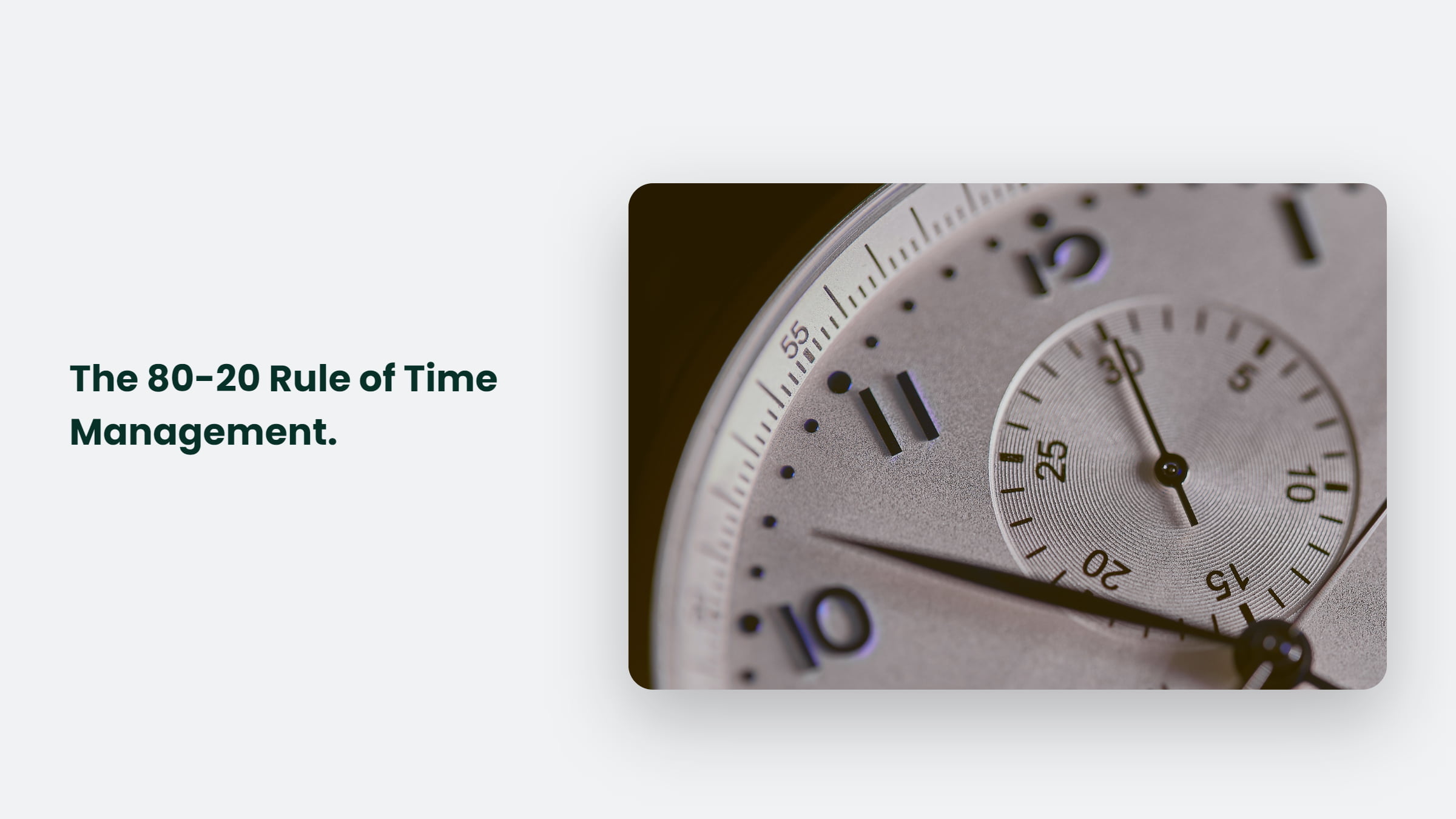

What is the 80 20 Rule in Time Management?

As Seen On
Time is a precious commodity in today’s fast-paced world, and managing it effectively can mean the difference between success and failure. That’s why we’re taking a closer look at the 80-20 rule, a time management tool that can help you maximize your productivity and achieve your goals faster.

So, what is the 80-20 rule, and how does it work?
Put simply, the 80 20 rule states that 80% of your results come from just 20% of your efforts. This principle can be applied to many areas of life, including work, relationships, and personal development.
But how does it help you manage your time better?
Imagine you’re a busy professional with a never-ending to-do list. You have a deadline looming, and you’re feeling overwhelmed by the sheer number of tasks you need to complete. If you apply the 80-20 rule, you’ll focus on the 20% of your tasks that will deliver 80% of the results and delegate or eliminate the rest. It will help you prioritize your time and reduce the stress of having too much to do in too little time.
The 80-20 rule can also be applied to your daily routine. For example, you spend 8 hours at work each day. According to the 80-20 rule, you’ll likely only need to spend around 1 hour and 36 minutes on the 20% of tasks that deliver 80% of the results. That’s a significant reduction in the time you’ll need to spend at work, leaving you more time to focus on the things that matter most to you.
But the 80-20 rule isn’t just about time management; it’s also about developing better habits. By focusing on the 20% of activities that deliver 80% of your results, you’ll be able to build stronger relationships, pursue your passions, and achieve greater success in your personal and professional life.
How to Apply the 80-20 Rule to Your Life:
Now that you understand the basics of the 80-20 rule let’s take a closer look at how you can apply it to your life. Here are some tips to help you get started:
Identify your 20%:
The first step to applying the 80-20 rule is to identify the 20% of tasks, activities, or people that deliver 80% of your results. It could be the 20% of your work tasks that are the most important or the 20% of your friends and family who are the most supportive. Once you’ve identified your 20%, focus on these tasks, activities, or people and eliminate the rest.
Make a schedule:
Once you’ve identified your 20%, it’s time to make a schedule. Block out time in your calendar to focus on the most important tasks and prioritize these tasks over less important ones.
Eliminate distractions:
Distractions are the enemy of productivity and can derail your efforts to apply the 80-20 rule. To minimize distractions, turn off your phone, log out of social media, and create a quiet workspace. By eliminating distractions, you’ll be able to focus on the tasks that matter most and achieve better results.
Track your progress:
Tracking your progress is essential to applying the 80-20 rule. Keep a record of the tasks you complete each day, and evaluate your progress regularly. It will help you stay on track and make any necessary adjustments to your schedule.
Celebrate your successes:
Finally, it’s important to celebrate your successes. When you’ve achieved your goals, take some time to reflect on your achievements and reward yourself. It will help you stay motivated and keep you focused on your goals.
Frequently Asked Questions:
Is the 80-20 rule scientifically proven?
While the 80-20 rule is not scientifically proven, it has been widely adopted as a useful principle for managing time and achieving better results.
Can the 80-20 rule be applied to every aspect of life?
Yes, the 80-20 rule can be applied to many different areas of life, including work, personal development, and relationships. However, it’s important to find what works best for you and adapt the rule to suit your needs.
Is the 80-20 rule a guarantee of success?
No, the 80-20 rule is not a guarantee of success, but it can be a useful tool for improving your productivity and achieving better results.
Conclusion:
In conclusion, the 80-20 rule is a simple yet powerful tool for managing your time and achieving your goals. By focusing on the 20% of tasks, activities, or people that deliver 80% of your results, you can maximize your productivity and achieve greater success. So, grab a cuppa and start applying the 80-20 rule today!
Casey Jones
Up until working with Casey, we had only had poor to mediocre experiences outsourcing work to agencies. Casey & the team at CJ&CO are the exception to the rule.
Communication was beyond great, his understanding of our vision was phenomenal, and instead of needing babysitting like the other agencies we worked with, he was not only completely dependable but also gave us sound suggestions on how to get better results, at the risk of us not needing him for the initial job we requested (absolute gem).
This has truly been the first time we worked with someone outside of our business that quickly grasped our vision, and that I could completely forget about and would still deliver above expectations.
I honestly can't wait to work in many more projects together!
Disclaimer
*The information this blog provides is for general informational purposes only and is not intended as financial or professional advice. The information may not reflect current developments and may be changed or updated without notice. Any opinions expressed on this blog are the author’s own and do not necessarily reflect the views of the author’s employer or any other organization. You should not act or rely on any information contained in this blog without first seeking the advice of a professional. No representation or warranty, express or implied, is made as to the accuracy or completeness of the information contained in this blog. The author and affiliated parties assume no liability for any errors or omissions.

